The exploration of Corgi breeds, particularly the Pembroke and Cardigan Welsh Corgis, unveils a fascinating tapestry of history intertwined with Welsh culture and agricultural practices. Originally bred for herding, these dogs exhibit unique traits that reflect their roles and relationships with humans. While both breeds share a common lineage, their distinctions in temperament and appearance have significant implications for their modern-day popularity. Understanding these nuances prompts a deeper inquiry into how historical contexts shaped their development and the impact of royal associations on their status today. What factors have contributed to their enduring appeal?
Origins of Corgi Breeds
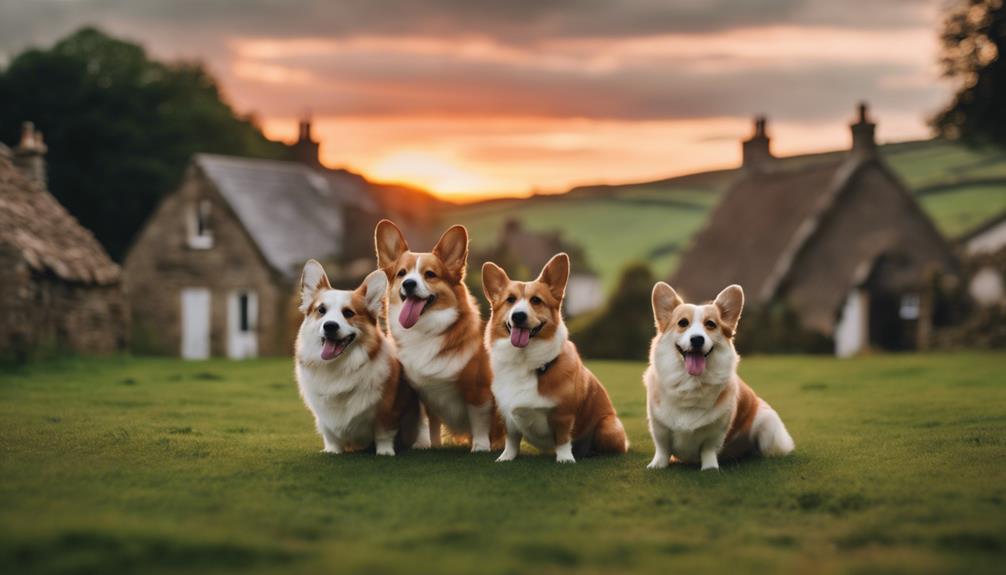
The origins of Corgi breeds can be traced back to Wales, where they were initially developed for herding cattle and other livestock.
Two primary breeds emerged: the Pembroke Welsh Corgi and the Cardigan Welsh Corgi. These breeds share a common ancestry but exhibit distinct physical traits and temperaments.
Corgis were valued for their intelligence and agility, making them effective herders.
Genetic diversity within Corgi breeds is essential for their overall health and longevity. Breeders strive to maintain this diversity to prevent genetic disorders that can arise from inbreeding.
Understanding Corgi ancestry helps enthusiasts appreciate the historical significance of these dogs and their evolution from hardworking farm companions to beloved family pets.
Historical Roles of Corgis
Corgis have played significant roles throughout history, particularly as herding companions in Wales, where they helped manage livestock on farms. Their strong work ethic and intelligence made them invaluable to farmers, showcasing their natural herding instincts.
Additionally, Corgis gained royal connections, notably with Queen Elizabeth II, which elevated their status and influence, making them beloved pets around the world.
Herding Companions in Wales
Historically, these loyal herding companions played a vital role in managing livestock on the rugged Welsh landscapes, demonstrating both intelligence and agility in their tasks.
Corgis, particularly the Pembroke and Cardigan breeds, were prized for their ability to herd cattle and sheep. Their low stature allowed them to nip at the heels of animals while avoiding kicks, making them effective workers.
The unique bond between corgis and their handlers exemplified true Welsh companionship, as these dogs often developed deep, trusting relationships with families.
Corgi herding was not just a job; it was a way of life. Their dedication and skill have cemented their place in Welsh culture, showcasing their importance in agricultural communities throughout history.
Royal Connections and Influence
A significant chapter in the history of corgis is marked by their association with the British royal family, particularly Queen Elizabeth II, who greatly influenced the popularity and perception of these breeds.
The Queen's affection for corgis began in her childhood and continued throughout her life, symbolizing loyalty and companionship. Their presence in royal lineage added an air of prestige, elevating corgis to a status enjoyed by few other breeds.
This royal endorsement shaped corgi symbolism as a representation of aristocracy and comfort. Corgis have appeared in various royal events and are often featured in media, further solidifying their iconic status.
Today, these charming dogs remain deeply woven into the fabric of British culture, admired by many.
Pembroke Vs. Cardigan Corgis
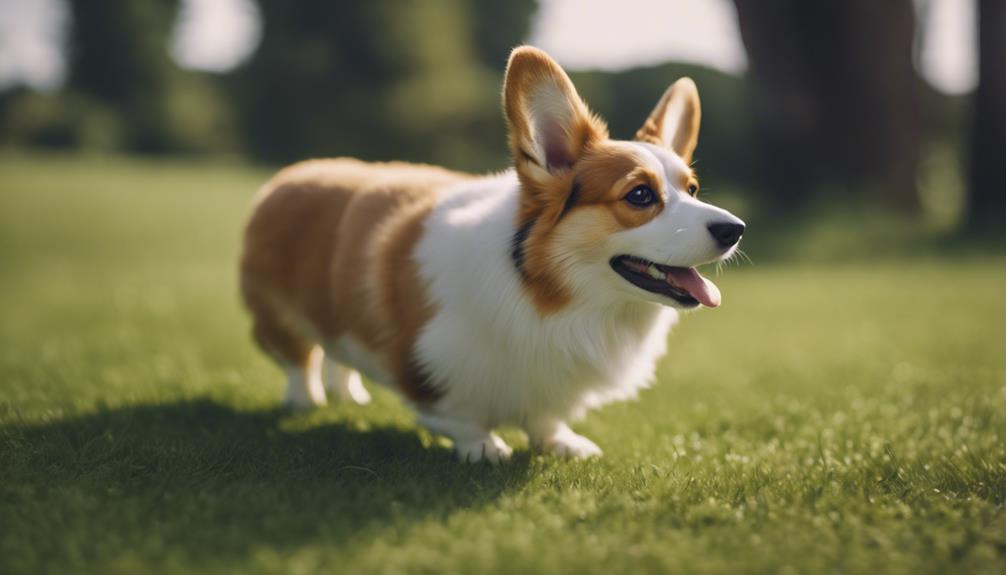
Distinguished by their unique physical traits and temperamental nuances, Pembroke and Cardigan Corgis represent two distinct branches of the same breed lineage.
Pembroke characteristics include a shorter body, a more fox-like face, and traditionally docked tails, giving them a distinct appearance. They are known for their friendly, outgoing nature, making them excellent companions.
In contrast, Cardigan traits feature a longer body, rounded ears, and a bushier tail, presenting a sturdier look. Cardigans are typically more reserved and loyal, often forming strong bonds with their families.
While both breeds share a herding background, their differences in appearance and temperament make them uniquely charming, appealing to a variety of dog enthusiasts and families alike.
Corgis in Welsh Culture
Corgis hold a special place in Welsh culture, often appearing in folklore and traditional stories that highlight their unique characteristics.
They are also famously associated with the British royal family, particularly Queen Elizabeth II, which has further cemented their status as a cultural symbol of Wales.
Additionally, these dogs represent loyalty and companionship, making them beloved pets that embody the spirit of the Welsh people.
Corgis in Folklore
In Welsh culture, corgis are often associated with rich folklore that highlights their significance as loyal companions and mythical creatures in local legends.
Corgi legends recount stories of these dogs serving as fairy steeds, guiding fairies through enchanted forests. Their mythical origins are deeply rooted in the belief that their presence brings good fortune and protection.
One popular tale suggests that the markings on a corgi's coat resemble the harnesses of fairy chariots, emphasizing their connection to the mystical. Corgis were also said to ward off evil spirits, making them cherished companions for many families.
This blend of loyalty and magic contributes to the enduring popularity of corgis in Welsh culture, reinforcing their role as both pets and symbols of folklore.
Royal Connections and Symbolism
The deep-rooted connection between corgis and Welsh culture is further exemplified by their association with royalty, particularly through their prominence in the British royal family.
Corgi symbolism is deeply ingrained in the heritage of Wales, often representing loyalty, companionship, and nobility. The breed gained international fame when Queen Elizabeth II adopted Pembroke Welsh Corgis, showcasing their royal lineage.
This royal endorsement not only elevated the breed's status but also intertwined corgis with British identity. Historically, corgis were used as herding dogs, symbolizing the hardworking spirit of the Welsh people.
Today, they remain a cherished part of royal life, embodying both cultural significance and the enduring legacy of Welsh tradition.
Evolution of Corgi Traits
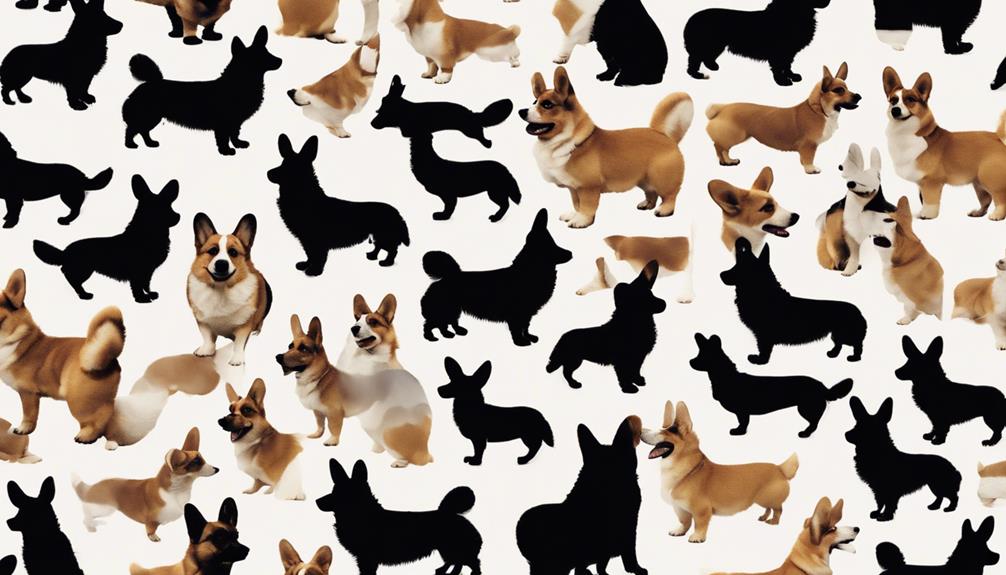
Evolving over centuries, the distinct traits of Corgis reflect their adaptation to various roles, particularly as herding and companion animals. The breed's genetic diversity has contributed to a wide range of physical and behavioral characteristics.
For instance, the selection for traits such as a sturdy build, intelligence, and a friendly disposition has made Corgis well-suited for herding livestock and forming strong bonds with families. Specific traits, like their short legs and long bodies, were selected to allow them to maneuver easily around cattle.
Additionally, the breed's alertness and loyalty were emphasized through careful trait selection, ensuring they excelled in their roles. This evolutionary process has created the beloved Corgis we know today, with a unique blend of charm and functionality.
Corgis in Royal History
Corgis have long been intertwined with British royalty, becoming a symbol of prestige and affection since their introduction to the royal household. Their history is rich, reflecting both corgi symbolism and corgi heritage.
Notably, the following points highlight their royal connections:
- Queen Elizabeth II: She owned more than 30 corgis during her reign, showcasing her affection for the breed.
- Wales' National Dog: Corgis are a symbol of Wales, where they originated, linking them to national pride.
- Royal Portraits: Corgis often appear in paintings and photographs of royalty, emphasizing their status.
- Corgis in Ceremonies: They have participated in various royal events, further solidifying their place in history.
These elements illustrate how corgis have become a cherished part of royal life.
Modern Corgi Popularity
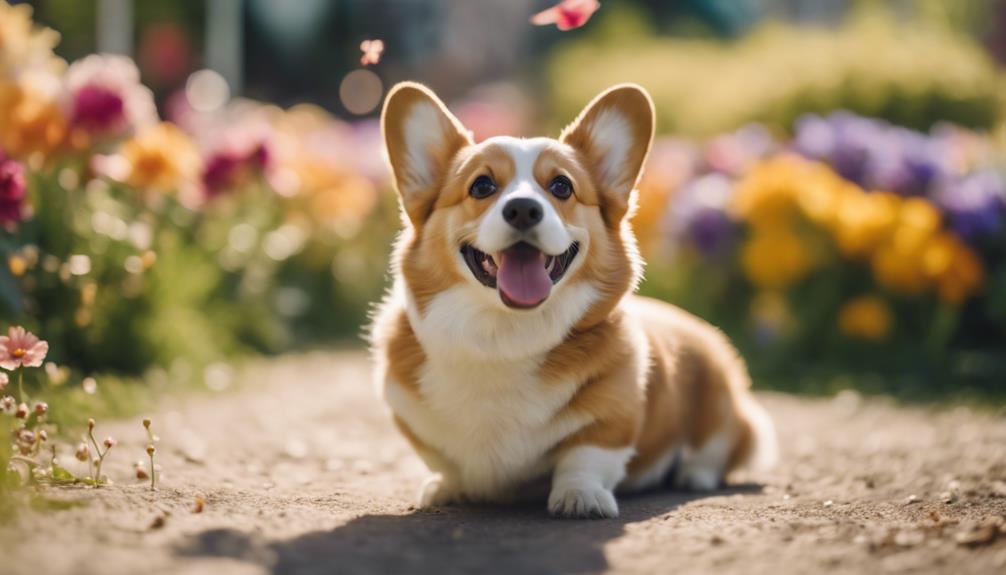
Popularity of corgis has surged in recent years, driven by their charming appearance and playful personalities, making them a favorite among dog enthusiasts worldwide.
This rise in popularity is reflected in various aspects of modern culture, including corgi fashion, where these dogs are often seen sporting stylish outfits and accessories, appealing to pet owners who enjoy dressing their pets.
Additionally, corgi training has gained attention, with many owners keen to teach their dogs tricks and commands, showcasing their intelligence.
Social media platforms also play a significant role, as adorable corgi videos and images attract millions of followers.
Distinct Characteristics of Corgis
Corgis are known for their unique physical traits and lively personalities, which contribute to their charm.
These small, sturdy dogs typically have short legs, a long body, and large, expressive ears, making them easily recognizable.
In addition to their distinct appearance, Corgis are also celebrated for their friendly temperament and playful behavior, which make them excellent companions for families and individuals alike.
Physical Traits Overview
One can easily recognize Corgis by their distinct physical traits, which include short legs, a sturdy body, and large, expressive ears. These characteristics contribute to their unique charm and appeal.
Here are some key features of Corgis:
- Corgi Size: Typically, they stand about 10 to 12 inches tall at the shoulder, making them small but sturdy.
- Corgi Coat: Their double coat is thick and can come in various colors, including fawn, black, and brindle.
- Tail: Corgis generally have a short tail, which adds to their distinctive appearance.
- Eyes: Their large, round eyes are often bright and alert, reflecting their lively personality.
These physical traits not only define the breed but also contribute to their functionality as herding dogs.
Temperament and Behavior
The unique physical traits of Corgis are complemented by a lively and affectionate temperament, making them not only charming companions but also highly engaging working dogs.
Corgis are known for their friendly and outgoing personality traits, which foster strong bonds with family members and other pets. Their playful nature encourages social interaction, while their intelligence allows them to excel in training.
Corgi social behavior tends to be amiable, as they generally get along well with children and other animals. However, their herding instincts can sometimes lead to assertive behavior, particularly if they feel the need to protect their family.
Corgi Breed Standards
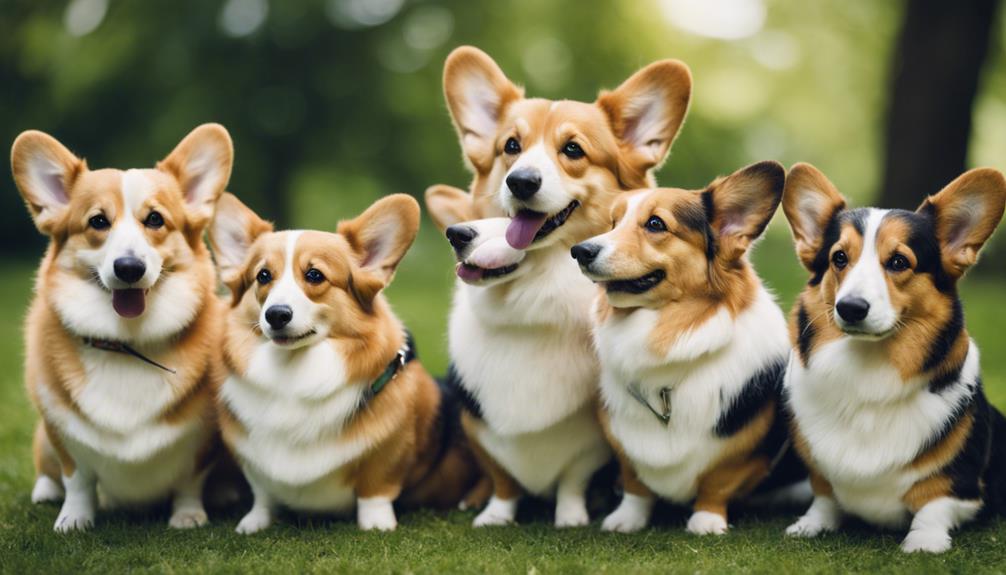
Breed standards for corgis are established to ensure consistency in appearance and temperament, reflecting the unique characteristics that define each variety. Different organizations recognize breed standard variations that distinguish the two main types: the Pembroke Welsh Corgi and the Cardigan Welsh Corgi.
Key aspects of these standards include:
- Size: Corgis should be low-set and sturdy, with specific height and weight guidelines.
- Coat: The coat can vary in color and texture, but it must be well-groomed and healthy.
- Ears: Erect ears are a prominent feature, with variations in size and shape.
- Temperament: Both breeds should exhibit friendliness and intelligence, essential for their roles as companions.
Understanding these standards helps ensure the health and well-being of corgis.
Corgis in Popular Media
Corgis have captured the hearts of many, leading to their prominent presence in popular media, where they are often depicted as endearing companions and symbols of loyalty.
Corgis in film can be seen in various family-friendly movies, showcasing their playful nature and charm. For instance, the animated film 'The Queen's Corgi' highlights the adventures of a royal corgi, demonstrating their connection to British culture.
Additionally, corgis in cartoons frequently portray them as clever and spirited characters, appealing to audiences of all ages. Their distinct appearance and lively personalities make them ideal subjects for storytelling, reinforcing their status as beloved pets.

